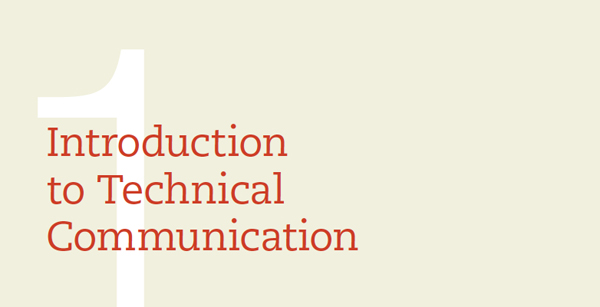Chapter Introduction

THIS TEXTBOOK EXPLORES how people in the working world find, create, and deliver technical information. Even if you do not plan on becoming a technical communicator (a person whose main job is to produce documents such as manuals, reports, and websites), you will often find yourself writing documents on your own, participating in teams that write them, and contributing technical information for others who read and write them. The purpose of Practical Strategies for Technical Communication is to help you learn the skills you need to communicate more effectively and more efficiently in your professional life.
People in the working world communicate technical information for a number of purposes, many of which fall into one of two categories:
To help others learn about a subject, carry out a task, or make a decision. For instance, the president of a manufacturing company might write an article in the company newsletter to explain to employees why management decided to phase out production of one of the company’s products. Administrators with the Social Security Administration might hire a media-
production company to make a video that explains to citizens how to sign up for Social Security benefits. The board of directors of a community- service organization might produce a grant proposal to submit to a philanthropic organization in hopes of being awarded a grant. To reinforce or change attitudes and motivate readers to take action. A wind-
energy company might create a website with videos and text intended to show that building windmills off the coast of a tourist destination would have many benefits and few risks. A property owners’ association might create a website to make the opposite argument: that the windmills would have few benefits but many risks. In each of these two cases, the purpose of communicating the information is to persuade people to accept a point of view and encourage them to act— perhaps to contact their elected representatives and present their views about this public- policy issue.
Notice that when you communicate in the workplace, you always have a clear purpose—what you want to achieve—